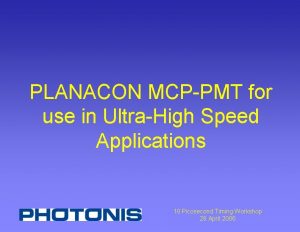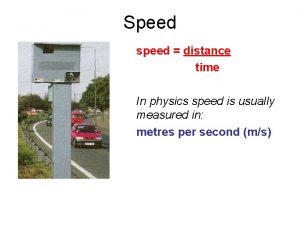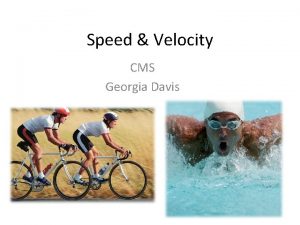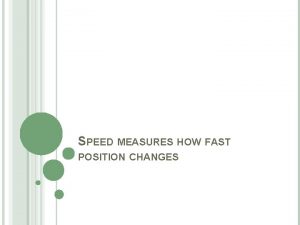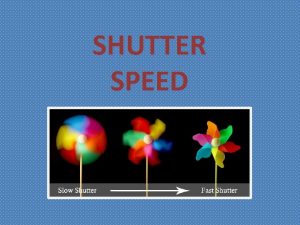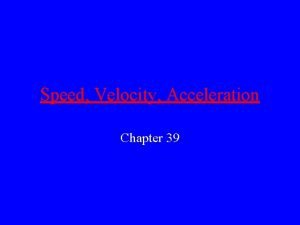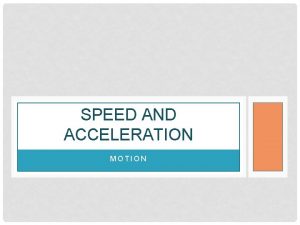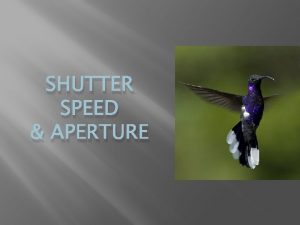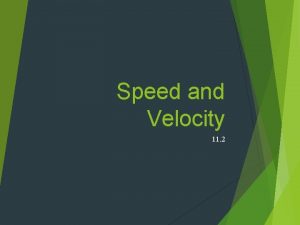PLANACON MCPPMT for use in UltraHigh Speed Applications



















- Slides: 19

PLANACON MCP-PMT for use in Ultra-High Speed Applications 10 Picosecond Timing Workshop 28 April 2006

Planacon™ MCP-PMTs • Two inch square flat PMT with dual MCP multiplier. • Anodes, 2 x 2, 8 x 8 and 32 x 32 configurations. • Improved Open Area Ratio device now available • Bi-alkali cathode on quartz faceplate. • Easily tiled, low profile, excellent time resolution, excellent uniformity. 10 Picosecond Timing Workshop 28 April 2006 2

PLANACON Family • 50 mm Square family of MCP based PMTs – 8500 X – 4 anode – 8501 X – 64 anode – 8502 X – 1024 anode • New improved Active Area Variants available with 86% active area, 85002/85012/85022 • 64 anode PMT available with integrated Anger-logic readout • Gated High Voltage Power Supply available 10 Picosecond Timing Workshop 28 April 2006 3

MCP-PMT Operation photon Faceplate Photocathode Photoelectron Dual MCP DV ~ 200 V DV ~ 2000 V Gain ~ 106 DV ~ 200 V Anode 10 Picosecond Timing Workshop 28 April 2006 4

MCP-PMT Construction Indium Seal MCP Retainer Dual MCP Faceplate Ceramic Insulators Anode & Pins • Spacing between faceplate and MCP and anode can be varied for different applications • Anode can be easily modified 10 Picosecond Timing Workshop 28 April 2006 5

Timing Limitations – Detected Quantum Efficiency (DQE) • Photocathode QE • Collection efficiency • Secondary emission factor of first strike – Electron optics and amplification • Cathode – MCP Gap and Voltage • Pore-size, L: D, and voltage of MCP • MCP-Anode Gap and Voltage – Signal extraction 10 Picosecond Timing Workshop 28 April 2006 6

Detected Quantum Efficiency DQE Component Current Next Gen Limit QE @ 420 nm 20% 28% 32% Open Area of MCP 50% 70% 80% First Strike 85% 90% 95% DQE for Timing 8. 5% 17. 6% 24. 3% Multi-photon TTS improvement 1. 0 . 69 . 59 10 Picosecond Timing Workshop 28 April 2006 7

DQE Efforts – Photocathode QE • Developing new cathode recipe for transfer system based on nuclear medicine bi-alkali which has 35% QE – Collection efficiency • 10 micron pore improves open area to ~60% • Over-etching of glass can increase this to 70% • Funneled pores can increase this to > 80% – Secondary yield • Current yield is 2. 3 – 3. 0 • Deposition of enhancement films such as Mg. O 2 can improve this to 5. 0 or higher 10 Picosecond Timing Workshop 28 April 2006 8

Cathode-MCP Gap – Limitations • Recoil electrons (cause long TT shoulder) – Decreased DQE for leading edge timing measurements – Decrease imaging capabilities • Transit time (Variations in p. e. velocity) – Dominated by transverse momentum of the photoelectrons – Becomes worse at higher photon energies – Counter-measures • Reduce physical gap – Significant reduction in transit time, reducing effects of transverse momentum • Increase voltage – Higher acceleration reduces transit time and effects of transverse momentum 10 Picosecond Timing Workshop 28 April 2006 9

Recoil Electrons Faceplate pe Recoil Electron L MCP • Scattered electrons can travel a maximum of 2 L from initial strike • Produces a TTS shoulder • Reduces the DQE for direct detection 10 Picosecond Timing Workshop 28 April 2006 10

85011 430 Drop Faceplate • Cathode – MCP gap is decreased from to ~0. 85 mm • Photocathode active area is reduced to 47 mm from 50 mm 10 Picosecond Timing Workshop 28 April 2006 11

Effect of Reduced PC-MCP Gap C. Field, T. Hadig, David W. G. S. Leith, G. Mazaheri, B. Ratcliff J. Schwiening, J. Uher, + and J. Va’vra* Development of Photon Detectors for a Fast Focusing DIRC 5 th International workshop on Ring Imaging Cherenkov Counters (RICH 2004), 11/30/2004 -12/5/2004, Playa del Carmen, Mexico 10 Picosecond Timing Workshop 28 April 2006 12

Cathode – MCP Transit Time • Increased voltage or decreased gap can drastically reduce the transit time, and therefore transit time spread 10 Picosecond Timing Workshop 28 April 2006 13

MCP Contributions – MCP amplification is responsible for anode risetime • Secondary electron trajectories result in variations in time between strikes. – Pore-size • Reduced pore size decreases thickness for the same amplification, reducing transit time • L: D sets the gain assuming same applied field • Want small pore size, minimum L: D and high field • Bias angle increases transit time and amplification, can reduce L: D and increase bias to keep timing properties the same but improve lifetime 10 Picosecond Timing Workshop 28 April 2006 14

Amplification in Pore • Typical secondary yield is 2 • For 40: 1 L: D there are typically 10 strikes (210 ~ 103 gain single plate) • Number of strikes depends on velocity of individual secondary electrons 10 Picosecond Timing Workshop 28 April 2006 15

MCP Transit Time • Transit time assumes 10 strike in 40: 1 L: D with 1000 V applied per plate, Chevron configuration, cold secondary electrons 10 Picosecond Timing Workshop 28 April 2006 16

Anode-MCP Gap – Limitations • Transit time (Variations in secondary electron velocities) – Dominated by location of origination in MCP – Also affected by transverse momentum • Capacitance and Inductance between the two electrodes – Can effect signal quality at the anode – Counter-measures • Reduce physical gap – Significant reduction in transit time, reducing effects of transverse momentum • Increase voltage – Higher acceleration reduces transit time and effects of transverse momentum • Provide a ground plane or pattern on the anode • Reduce resistance of MCP-Out electrode 10 Picosecond Timing Workshop 28 April 2006 17

Other Considerations • Current limitations – Have received MCPs with 300 u. A strip current, achieve 30 u. A linear operation – Can increase to 60 u. A with electrode change • Lifetime – Capital investment in better electron scrub system – Recent modifications to the process which increases lifetime, measurements in process – Increased bias angle up to 19 degrees – Gating of Cathode during periods of no data collection • Anode configuration – Can modify electrode pattern on anodes to include ground plane or ground pattern for improved signal extraction 10 Picosecond Timing Workshop 28 April 2006 18

Future Directions • • • Improved DQE Improved average anode current (50 – 100 u. A) Improved lifetime Step faceplate to optimize timing Reduce anode-MCP gap to investigate effect on signal integrity and TTS • MCP input treatment to optimize DQE and reduce recoiling effect (increased Open Area and high yield coating) • New anode configurations with integral ground plane or ground pattern to improve 10 Picosecond Timing Workshop 28 April 2006 19
 Speed calculation
Speed calculation What is fringe vision when driving
What is fringe vision when driving Speed detection of moving vehicle using speed cameras
Speed detection of moving vehicle using speed cameras Kontinuitetshantering i praktiken
Kontinuitetshantering i praktiken Novell typiska drag
Novell typiska drag Nationell inriktning för artificiell intelligens
Nationell inriktning för artificiell intelligens Vad står k.r.å.k.a.n för
Vad står k.r.å.k.a.n för Varför kallas perioden 1918-1939 för mellankrigstiden
Varför kallas perioden 1918-1939 för mellankrigstiden En lathund för arbete med kontinuitetshantering
En lathund för arbete med kontinuitetshantering Kassaregister ideell förening
Kassaregister ideell förening Personlig tidbok fylla i
Personlig tidbok fylla i A gastrica
A gastrica Vad är densitet
Vad är densitet Datorkunskap för nybörjare
Datorkunskap för nybörjare Stig kerman
Stig kerman Debattartikel struktur
Debattartikel struktur Autokratiskt ledarskap
Autokratiskt ledarskap Nyckelkompetenser för livslångt lärande
Nyckelkompetenser för livslångt lärande Påbyggnader för flakfordon
Påbyggnader för flakfordon Formel för lufttryck
Formel för lufttryck




















